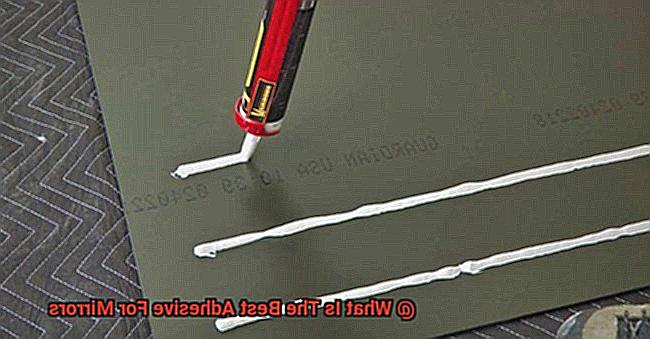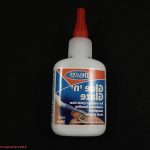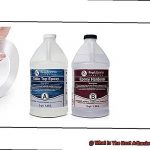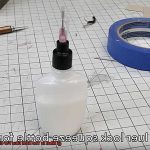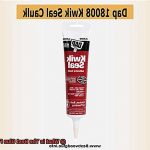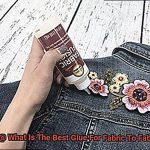Ever wondered what keeps those jaw-dropping mirrors firmly in place? The answer lies within the invisible bond created by an extraordinary invention: mirror adhesives. But here’s the kicker – not all adhesives are created equal when it comes to sticking mirrors, and finding the perfect one can be a mind-boggling task.
Imagine this: you’ve just moved into a new pad, ready to spruce it up with stunning mirrors that reflect your style and personality. But what good is a gorgeous mirror if it ends up crashing down? Enter the captivating world of mirror adhesives – where science meets practicality to ensure your mirrors stay put, without any slipping or falling mishaps.
In this blog post, we’ll dive deep into the realm of mirror adhesives, exploring various options available and equipping you with the knowledge to make an informed decision on the best adhesive for your mirrors. We’ll dissect crucial factors like surface type, size, and location that play a vital role in adhesive selection.
But wait, there’s more. We’ll unveil several adhesive contenders worth considering – from flexible silicone-based adhesives to robust mirror mastic and hassle-free double-sided mounting tapes. Plus, we’ll spill insider tips and tricks to guarantee your mirrors stay securely affixed while safeguarding your walls or delicate surfaces.
Stick around as we embark on an exhilarating journey, unveiling the secrets behind mirror adhesives and helping you discover the ultimate stickiness for your prized mirrors. With the right adhesive in hand, you can transform your space into a reflective haven that not only elevates aesthetics but also captures your unique perspective. So let’s dive headfirst into the world of mirror adhesives and unlock the secret to secure and mesmerizing mirrors.
What to Consider When Choosing an Adhesive for Mirrors?
Contents
- 1 What to Consider When Choosing an Adhesive for Mirrors?
- 2 Silicone Adhesives: An Ideal Choice for Mirror Installations
- 3 Mirror Mastic: A Specialized Adhesive for Mirror Applications
- 4 Construction Adhesives: A Reliable Option for Heavy Mirrors
- 5 Epoxy Resins: The Best Choice for Large and Heavy Mirrors
- 6 How to Choose the Right Adhesive for Your Mirror Installation?
- 7 Preparing the Surface Before Applying the Adhesive
- 8 Application Techniques to Ensure Optimal Bonding Strength
- 9 Conclusion
Choosing the right adhesive for your mirrors is crucial to ensure a secure and long-lasting bond. The last thing you want is for your mirror to come crashing down or get damaged due to an inadequate adhesive. In this blog post, we will explore the key factors to consider when selecting an adhesive for mirrors.
By taking these considerations into account, you can make an informed decision and have peace of mind knowing that your mirrors are safely installed.
Selecting the Right Type of Adhesive
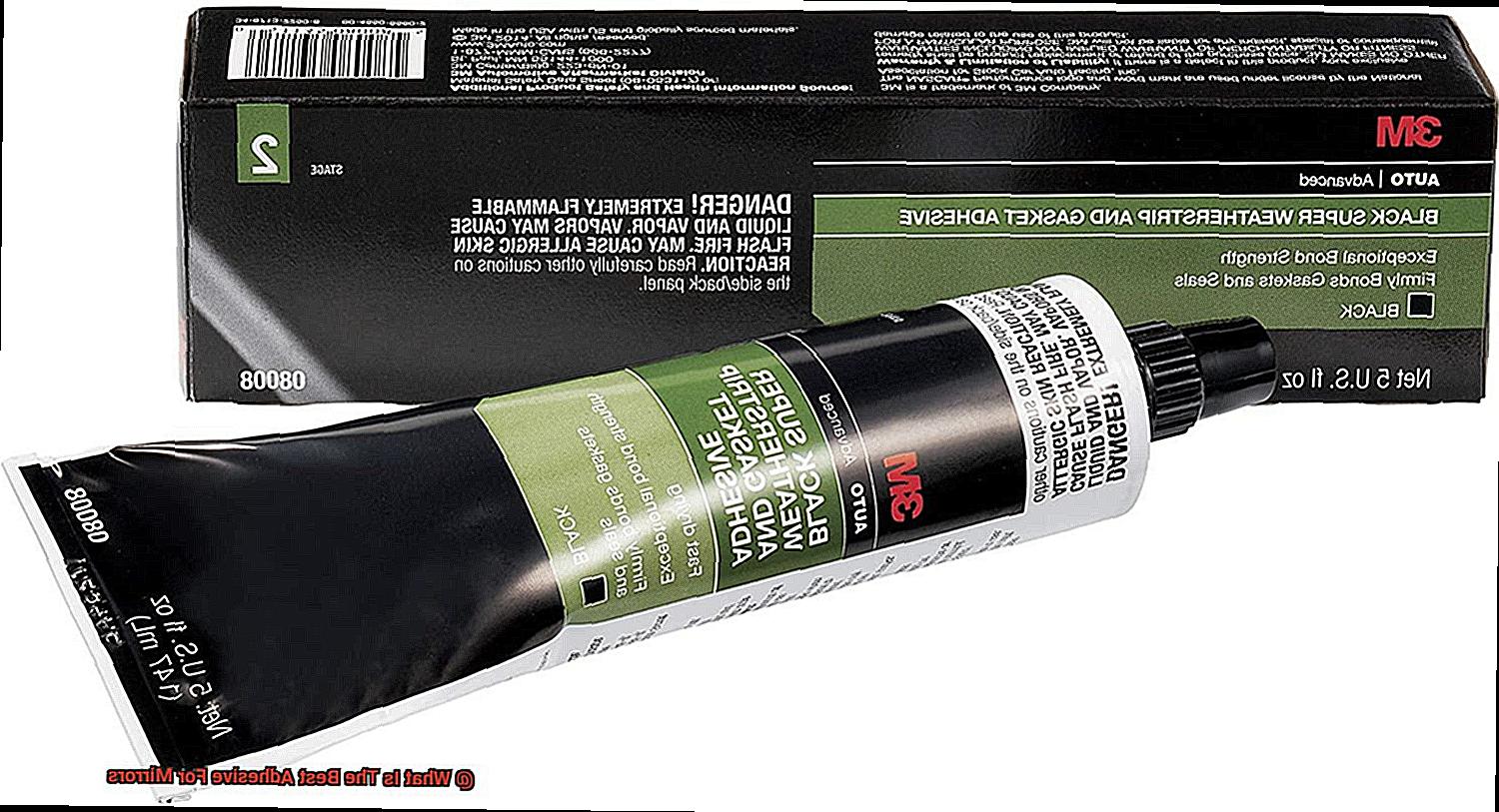
When it comes to adhesives for mirrors, there are various options available, each with its own strengths and weaknesses. Silicone-based adhesives are praised for their flexibility and resistance to moisture, making them ideal for bathrooms or areas with high humidity.
Adhesive tapes offer a quick and easy installation process, perfect for those who desire convenience. Liquid nails and construction adhesives provide a strong bond, but they may require more time for curing. Consider your specific needs and choose an adhesive that aligns with them.
Ensuring Surface Compatibility
The surface that the adhesive will be applied to plays a significant role in the effectiveness of the bond. Mirrors are typically made of glass, but they can have different coatings or finishes.
It’s crucial to select an adhesive that adheres well to both the mirror and the surface it will be attached to without causing any damage. Always check the compatibility of the adhesive with both materials to ensure a proper bond.
Prioritizing Strength and Durability
The strength and durability of the adhesive are essential factors to consider when choosing an adhesive for mirrors, especially if you’re dealing with larger or heavier mirrors. The adhesive should be able to support the weight of the mirror without failing over time.
Additionally, mirrors are often exposed to humidity and temperature changes, so the adhesive should withstand these conditions without losing its bonding properties. Look for adhesives specifically formulated for mirror applications and check their load-bearing capacity.
Considering Ease of Application
The ease of application is a crucial consideration, especially if you’re not experienced with adhesive applications. Some adhesives come in convenient tubes or cartridges that allow for precise application, making them suitable for beginners. Others may require mixing or additional tools, which can be more challenging for those without much expertise.
Choose an adhesive that matches your level of experience and the complexity of your mirror installation. Opting for an adhesive with clear instructions and a forgiving application process can make the task much easier and less stressful.
Thinking Ahead: Removability
In certain situations, you may need to remove or replace the mirror in the future. Therefore, it’s worth considering an adhesive that allows for easy removal without causing damage to the mirror or the surface it is attached to. Some adhesives offer a temporary bond that can be easily released, while others may require additional steps or solvents to loosen the bond.
Silicone Adhesives: An Ideal Choice for Mirror Installations
When it comes to mirror installations, you need an adhesive that can withstand the test of time and ensure a secure bond. Enter silicone adhesives, the superheroes of the adhesive world. With their exceptional bonding properties and durability, they are the perfect match for your mirrors.
So why exactly are silicone adhesives the go-to choice for mirror installations? Let me break it down for you:
- Unmatched Bonding Properties and Durability: Silicone adhesives are renowned for their ability to create a strong and long-lasting bond. They will keep your mirrors securely in place, no matter what challenges come their way.
- Flexibility to Withstand Stress and Movement: Mirrors can experience stress and movement over time, especially in high-traffic areas or locations with temperature fluctuations. But fear not, silicone adhesives are flexible. They can handle the stress and movement without compromising the bond, ensuring your mirrors stay intact.
- Resistant to Moisture and Temperature Changes: Whether you’re installing a mirror in a bathroom or an outdoor area, moisture and temperature changes are inevitable. Luckily, silicone adhesives have got you covered. They possess a high resistance to both moisture and temperature changes, making them the perfect choice for these types of installations.
- Easy Application Options: Silicone adhesives come in various forms such as caulk, sealant, or adhesive strips, providing you with flexibility during installation. Choose the option that suits your needs best and enjoy a hassle-free application process.
- Proper Surface Preparation is Key: Before applying the silicone adhesive, take the time to thoroughly clean and prepare the surface of the mirror and the mounting area. This step is crucial to ensure a strong bond between the adhesive and the mirror.
- Choose a Specific Product for Mirror Bonding: To achieve optimal results, it’s essential to select a high-quality silicone adhesive specifically formulated for mirror bonding. This ensures that you’re using an adhesive designed to meet the unique requirements of mirror installations.
- Follow Manufacturer’s Instructions: When applying the silicone adhesive, adhere to the manufacturer’s instructions meticulously. This includes following the recommended drying time, allowing the adhesive to set properly for maximum effectiveness.
Once the adhesive has dried, it’s time to check and ensure that your mirror is securely attached. Make any necessary adjustments if needed, and revel in the confidence that your mirrors will stay put for years to come.
Mirror Mastic: A Specialized Adhesive for Mirror Applications
Mirror mastic, the unsung hero of mirror mounting, is a remarkable adhesive designed specifically for mirror applications. With its exceptional bond strength and durability, mirror mastic offers a seamless solution to securely mount mirrors without the need for additional hardware.
Crafted from a combination of acrylic or silicone-based materials, mirror mastic boasts superior adhesion properties that resist moisture, heat, and UV radiation. This unique composition ensures that your mirrors stay firmly in place, even in challenging environments.
What sets mirror mastic apart from other adhesives is its ability to create a flawless bond between the mirror and the wall. Unlike traditional methods that rely on clips or brackets, mirror mastic eliminates the need for these cumbersome accessories, resulting in a sleek and polished installation that enhances the overall aesthetic of any space.
Not only is mirror mastic easy to use, but it also offers remarkable flexibility. Even after it has cured, this adhesive remains supple, allowing for slight movements and vibrations without compromising the bond between the mirror and the surface. This flexibility ensures that your mirrors stay securely mounted, even in high-traffic areas.
Furthermore, mirror mastic exhibits excellent resistance against moisture and humidity, making it an ideal choice for bathroom mirrors or any other area prone to high levels of moisture. Say goodbye to worries about steamy showers or damp environments compromising your mirror’s integrity – mirror mastic has got you covered.
To ensure a strong and secure bond, it’s crucial to prepare both the mirror and the mounting surface by thoroughly cleaning them and eliminating any dirt, dust, or grease. This meticulous attention to detail will guarantee a flawless installation that stands the test of time.
However, it’s important to note that mirror mastic should not be used on certain types of mirrors, such as antique or framed mirrors. The adhesive’s potent properties may damage the delicate reflective coating or seep into the frame, causing unwanted discoloration or warping. Exercise caution and choose alternative mounting methods for these special mirror types.
Construction Adhesives: A Reliable Option for Heavy Mirrors
Mirrors not only enhance the aesthetic appeal of any space but also serve as functional elements. However, when it comes to mounting heavy mirrors, ensuring a secure and long-lasting bond is of utmost importance. Construction adhesives have emerged as the ultimate solution, offering exceptional strength, versatility, and durability. In this article, we will delve into the reasons why construction adhesives are the go-to choice for securely attaching heavy mirrors.
Unyielding Bonding Properties:
The primary driving force behind the preference for construction adhesives in mirror installation is their unrivaled bonding properties. These adhesives are purposefully designed for construction projects, making them the perfect fit for various surfaces like walls and tiles. With their extraordinary bonding strength, they guarantee that even under immense stress, the mirror remains securely in place.
A Range of Formulations:
Construction adhesives are available in a diverse range of formulations, each catering to specific requirements and offering its own set of benefits. Polyurethane adhesives steal the show with their exceptional bonding strength and unmatched versatility. They effortlessly adhere to an array of materials such as glass, wood, metal, and concrete, making them a trustworthy option for securing mirrors.
Epoxy adhesives boast exceptional strength and moisture resistance, making them an essential choice when installing mirrors in high humidity areas like bathrooms. Additionally, they provide excellent chemical resistance, ensuring that the adhesive remains intact over time.
For those seeking flexibility combined with adhesive prowess, silicone-based adhesives come to the forefront. These adhesives exhibit remarkable adhesive properties while being able to endure temperature variations and movement without compromising their bond. This makes them ideal for mirrors in spaces prone to temperature fluctuations or vibrations.
Surface Preparation is Key:
To reap the full benefits of construction adhesives, meticulous surface preparation is vital. Prior to applying the adhesive, it is imperative to thoroughly clean the surface, eliminating any dust, grease, or contaminants that could impede its bonding capabilities. This meticulous preparation guarantees a robust and long-lasting bond between the mirror and the surface.
Application and Curing:
During the application process, adhering to the manufacturer’s instructions is paramount. Typically, a uniform bead of adhesive should be elegantly dispensed along the perimeter of the mirror, leaving sufficient space for expansion and contraction.
Epoxy Resins: The Best Choice for Large and Heavy Mirrors
When it comes to mounting those awe-inspiring large and heavy mirrors, you need an adhesive that can withstand the test of time. Look no further than epoxy resins. These extraordinary adhesives boast unmatched strength, durability, and the ability to create rock-solid bonds with various materials.
In this article, we will explore why epoxy resins reign supreme as the ultimate choice for securely mounting those magnificent mirrors.
Unrivaled Strength and Durability:
Epoxy resins are renowned for their jaw-dropping strength, making them the perfect match for supporting large and heavy mirrors. These adhesives possess unparalleled bonding properties, ensuring your mirror remains steadfastly in place even when subjected to hefty loads or jarring vibrations. Say goodbye to worries about your mirror slipping or tumbling.
Versatile Bonding Powers:
The unique chemical composition of epoxy resins allows them to forge formidable bonds with a wide array of materials commonly found in mirrors: glass and metal alike. Whether you have a glass-backed mirror or a metal-framed one, rest assured that epoxy resins will create an unbreakable bond that will stand the test of time.
Conquerors of Moisture and Temperature:
Bathroom mirrors, in particular, often face the relentless assault of moisture and temperature fluctuations. Fear not, for epoxy resins thrive in such conditions. These adhesives boast exceptional resistance to moisture, thwarting any degradation or weakening of the bond over time. Additionally, they fearlessly withstand temperature changes without losing their adhesive powers, ensuring your mirror remains firmly affixed even amidst steamy bathroom environments.
Gap-Filling Wizards:
One of the most remarkable advantages of epoxy resins is their wizardry in filling gaps and irregularities between the mirror and its mounting surface. This incredible feature provides invaluable support and stability, forging an unshakable bond even on uneven surfaces. Bid farewell to wobbly mirrors and embrace the confidence of a perfectly aligned reflection.
How to Choose the Right Adhesive for Your Mirror Installation?
Transforming a space with a mirror installation is an exciting endeavor, but choosing the right adhesive is essential for a secure and long-lasting result. With numerous adhesive options available, it’s important to consider factors such as the surface, size and weight of the mirror, humidity, temperature, and level of durability.
In this comprehensive guide, we will explore the top considerations when selecting an adhesive for your mirror installation, ensuring a successful and stylish outcome.
Surface Compatibility: The Foundation of a Secure Bond
To ensure a strong bond, it is crucial to consider the compatibility between the adhesive and the surface you’re attaching the mirror to. Different adhesives excel on specific surfaces. For instance, two-part epoxy adhesives are suitable for glass, metal, and wood surfaces. Construction adhesives offer exceptional bonding capabilities on various materials, while silicone adhesives provide flexibility and resistance to moisture and temperature changes.
Mirror Weight and Size: Supporting Your Reflection
The weight and size of your mirror dictate the adhesive’s strength requirements. Larger or heavier mirrors necessitate adhesives with superior holding power, such as mirror mastic or construction adhesives known for their stability and resilience. On the other hand, smaller or lightweight mirrors can benefit from double-sided mounting tape, which provides secure bonding without the need for drilling or screws.
Environmental Factors: Weatherproofing Your Reflection
Consider the environmental conditions in the installation area. If your mirror will be exposed to high humidity or frequent temperature fluctuations, silicone adhesives are the ideal choice due to their ability to withstand these conditions without compromising the bond. Additionally, epoxy resin adhesives offer exceptional strength and durability for mirrors exposed to extreme weather conditions.
Durability and Longevity: Ensuring a Timeless Reflection
To ensure your mirror remains securely in place over time, select an adhesive that offers long-lasting durability. Two-part epoxy adhesives and construction adhesives are renowned for their robust bonding capabilities, providing resistance to daily wear and tear. By choosing adhesives known for their durability, you can enjoy your mirror’s beauty for years to come.
Surface Preparation: Laying the Foundation for a Strong Bond
Proper surface preparation is crucial for optimal adhesion. Before applying any adhesive, thoroughly clean the surface, ensuring it is dry and free from dirt or debris. In some cases, roughening the surface slightly can improve adhesion. It is essential to follow the manufacturer’s instructions for surface preparation to achieve the best results and ensure a secure bond.
Preparing the Surface Before Applying the Adhesive
As you embark on the adhesive application process, it is crucial to pay attention to the critical step of surface preparation. By following these expert-recommended steps, you will ensure the longevity and strength of your mirror bond. Let’s dive into the fascinating world of surface preparation before applying the adhesive.
Step 1: A Spotless Canvas – Thoroughly Clean the Surface
Start by eradicating any trace of dirt, dust, or grease that could hinder the adhesive’s bonding capability. Whether it’s a mild soap and water solution or a specialized glass cleaner, meticulously clean the mirror surface. Remember to dry it completely before proceeding to the next step, allowing for an impeccable adhesive application.
Step 2: Embrace Imperfection – Roughen the Surface
Emphasizing adhesion excellence calls for a slightly roughened surface that enhances bonding opportunities. Employ fine-grit sandpaper or an abrasive pad with caution, gently treating the area where the adhesive will be applied. Exercise care to avoid scratching or damaging the mirror while creating a receptive surface for optimal grip.
Step 3: Breathe in Freshness – Wipe Away Dust and Debris
After roughening the surface, it’s essential to eliminate any lingering dust or debris that could interfere with adhesion. Utilize a clean cloth or paper towel to wipe away remnants, leaving behind a pristine and smooth surface that promotes flawless adherence.
Step 4: The Primer’s Secret – Enhancing Adhesion (if necessary)
In moisture-prone environments like bathrooms, consider amplifying your adhesive’s power with a primer. This additional layer can bolster adhesion capabilities and provide superior protection against moisture damage. Consult the adhesive manufacturer’s instructions or seek professional advice to determine if a primer is indispensable for your specific application.
Step 5: The Art of Application – Applying the Adhesive
With your canvas prepared, it’s time to bring out the adhesive and put it to work. Pay meticulous attention to the manufacturer’s instructions, as each adhesive may have unique application requirements. Utilize a caulk gun or a suitable tool to apply a smooth and even layer of adhesive on the mirror’s back or directly on the mounting surface.
Application Techniques to Ensure Optimal Bonding Strength
In our previous discussion, we emphasized the significance of surface preparation for flawless mirror installations. Today, we will delve deeper into the world of adhesive application techniques to ensure optimal bonding strength. Get ready to become a master in mirror bonding as we explore these essential tips and tricks.
Cleanliness is Next to Bond-iness:
Before applying any adhesive, guarantee a pristine mirror surface. Wipe away dirt, dust, and grease with a clean cloth. Stubborn grime can be eliminated with a mild detergent. Remember, patience is key – allow the surface to dry completely before proceeding.
Thin is In:
Embrace the beauty of thin and even adhesive layers for maximum bonding strength. Avoid excessive blobbing that can lead to uneven pressure distribution and weaken the bond. Opt for recommended adhesive spreaders or applicator tools to achieve that flawless thin layer.
The Right Adhesive for the Right Bond:
Choosing the appropriate adhesive is crucial for optimal bonding strength. Silicone-based adhesives, epoxy adhesives, and mirror mastic are viable options, each with its own application instructions and drying time. Follow the manufacturer’s guidelines closely for outstanding results.
Double-sided Bonding:
To ensure a secure connection, apply adhesive to both the back of the mirror and the surface it will be bonded to. This guarantees proper adhesion and prevents unsightly gaps or air pockets from forming. Apply the adhesive evenly, avoiding excess seeping from the edges.
Handle with Care:
When positioning the mirror onto the desired surface, exercise caution to avoid disrupting the bonding process. Sudden movements or shifts can be detrimental. For added support during curing, consider using temporary braces or clamps.
Press It Real Good:
Achieving a solid bond requires even pressure across the entire mirror surface. Utilize a roller or apply pressure with your hands to ensure proper contact between the adhesive and the mirror. This step guarantees a strong and unyielding connection.
Patience is a Virtue:
Curing time is of utmost importance. Follow the manufacturer’s instructions regarding the specific adhesive’s drying time. During this period, refrain from any movements or stress on the mirror to prevent potential damage or weakening of the bond.
iUYrXGCH0w4″ >
Conclusion
When it comes to finding the best adhesive for mirrors, there are a few options that stand out.
One popular choice is mirror mastic, a strong adhesive specifically designed for attaching mirrors to various surfaces. Another reliable option is silicone adhesive, known for its durability and resistance to moisture.
Ultimately, the best adhesive will depend on factors such as the size and weight of the mirror, as well as the surface it will be attached to.

